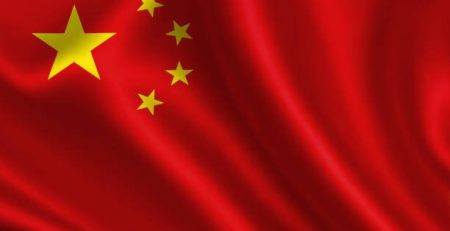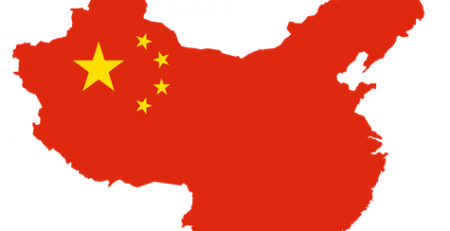Fourth Amendment to China’s Patent Law: The Big Picture of China’s New Patent Law
On June 1st, 2021, the Fourth Amendment to China’s Patent Law will take effect. The amendments will improve China’s patent protection while also making the IP system more flexible and sophisticated.
The first three changes to the Patent Law have essentially maintained the pattern of once every eight years since the creation of the patent system in China. This fourth amendment took a little longer to ratify, coming 12 years after the previous one. China reached a new stage of growth and made significant progress during that time period by following an innovation-driven development strategy. The production things that affect China’s development have changed dramatically, and affect the IP system.
President Xi Jinping has emphasized the importance of innovation in helping China achieve high-quality domestic demand-driven growth. Instead of depending too heavily on an export-oriented approach to sustain China’s long-term economic development, the “dual circulation” strategy introduces a new paradigm, with domestic circulation as the primary driver and domestic and international circulations mutually reinforcing. Strengthening intellectual property rights protection will boost the entire society’s inventive vibrancy, and enhancing the competitiveness of the market.
Owners of design rights should benefit from quintuple damages and improved design rights
Punitive damages for major intentional infringement have been added to the new Patent Law; courts can award one to five times the sum computed based on the patent holder’s losses, the infringer’s benefit, or a multiple of the patent license price. At the same time, the maximum amount of statutory damages has been increased to Rmb 5 million (about $735,000). Increased damages will certainly raise the value of a legitimate patent property, allowing more money to be invested in R&D.
The new Patent Law has placed additional duties on the defendant to address the difficulty of the plaintiff’s onus of proof in patent lawsuits. If the patent holder has done all possible to give evidence, but the infringer still has the accounting books and documents related to the infringement, the court may now order the infringer to provide evidence of damages, such as accounting books and sales records.
The new Patent Law also gives administrative IP enforcement additional power and widens the remedial measures that can be implemented before filing a patent lawsuit, such as property preservation and behavior preservation. As a result, both the judicial and administrative routes to preserving rights holders’ IP assets are expected to be more effective.
The latest changes paid significant attention to design patents. China’s businesses have become increasingly reliant on design. The new Patent Law incorporates the long-advocated partial design and increases the duration of a design patent from 10 to 15 years, in order to meet the requirements of the Hague Agreement. Meanwhile, domestic priority for design applications has been added for the first time.
The new Patent Law allows the applicant to submit a certified copy of the priority document within 16 months of filing the first invention or utility model application.
Essential factors to prevent abusive patent litigation
Patent holders will be more willing to file patent infringement actions if their rights are better protected. Some patent holders may try to monetize their patents through litigation. In order to strike a balance, the new Patent Law imposes several restrictions.
When a dispute over patent infringement arises over a utility model or design patent, for example, the people’s court or the IP administration may request that the patent holder submit a CNIPA-prepared patent right evaluation report. According to the new Patent Law, in addition to the patent holder, a suspected infringer may proactively demand a patent right evaluation report from the CNIPA and file it in a dispute before a people’s court or the IP administration.
The new Patent Law also clarifies that applying for a patent and utilizing a patent right must be done in good faith and must not jeopardize the public interest or others’ legitimate rights and interests. This comprehensive provision could be a powerful weapon against abusive patent applications and patent rights exploitation.
Pharmaceutical patents
The pharmaceutical industry is well prepared to benefit from the new Patent Law.
With the patentee requests, the term of protection for pharmaceutical patents can be extended if there are delays in the application procedure for approval of a new drug’s commercialization in China. The maximum length of time a patent can be extended is five years, with the entire effective time of the patent after it is granted not exceeding 14 years.
The new Patent Law essentially extends the time a new drug’s patent is valid. It includes a patent term adjustment (PTA) for invention patents, which is important to pharmaceutical businesses, as well as a patent term extension (PTE) for new drug-related patents to compensate for the time it takes to assess and approve a new medicine for marketing. The PTE may extend the patent term for the approved new medicine for a maximum of five years, with a total effective patent length of no more than 14 years from the date of marketing approval. According to the proposed Patent Law Implementing Regulations, the patent holder must file a request for PTA to the CNIPA within three months after receiving the Notice of Allowance, or a request for PTE within three months of receiving marketing approval for qualified novel medication, preparation method, and pharmaceutical use patents.
A patent linkage mechanism is also included in the new Patent Law. A dispute arising during the drug review and approval process between an applicant for drug marketing approval and the holder of a relevant patent right related to the drug for which registration is pursued can be resolved in civil judicial or administrative proceedings before the CNIPA, according to the mechanism. According to an effective judicial ruling, the National Medical Products Administration (NMPA) may decide whether the relevant drug’s marketing approval is suspended.
The patent linkage system’s main goal is to link the drug approval process to a patent infringement lawsuit, to resolve patent infringement disputes as early as possible during the generic drug approval process, to protect drug patent holders’ legitimate rights and interests, and to reduce the risk of patent infringement after a generic drug is marketed.
The formation of the PTE and the patent linkage system corrects the inadequacies in the present system, signaling a general strengthening of pharmaceutical patent protection in China, which will undoubtedly boost new drug research and development and promote pharmaceutical innovation.
The general direction
In general, the Patent Law amendments are an intrinsic demand of China’s economic development and should be interpreted in context of China’s current stage of development and economic strategy. The basic direction of development, as defined by ideas such as “innovation-driven,” “dual circulation,” “opening up,” and “harmonisation,” will not change, regardless of interpretation.











